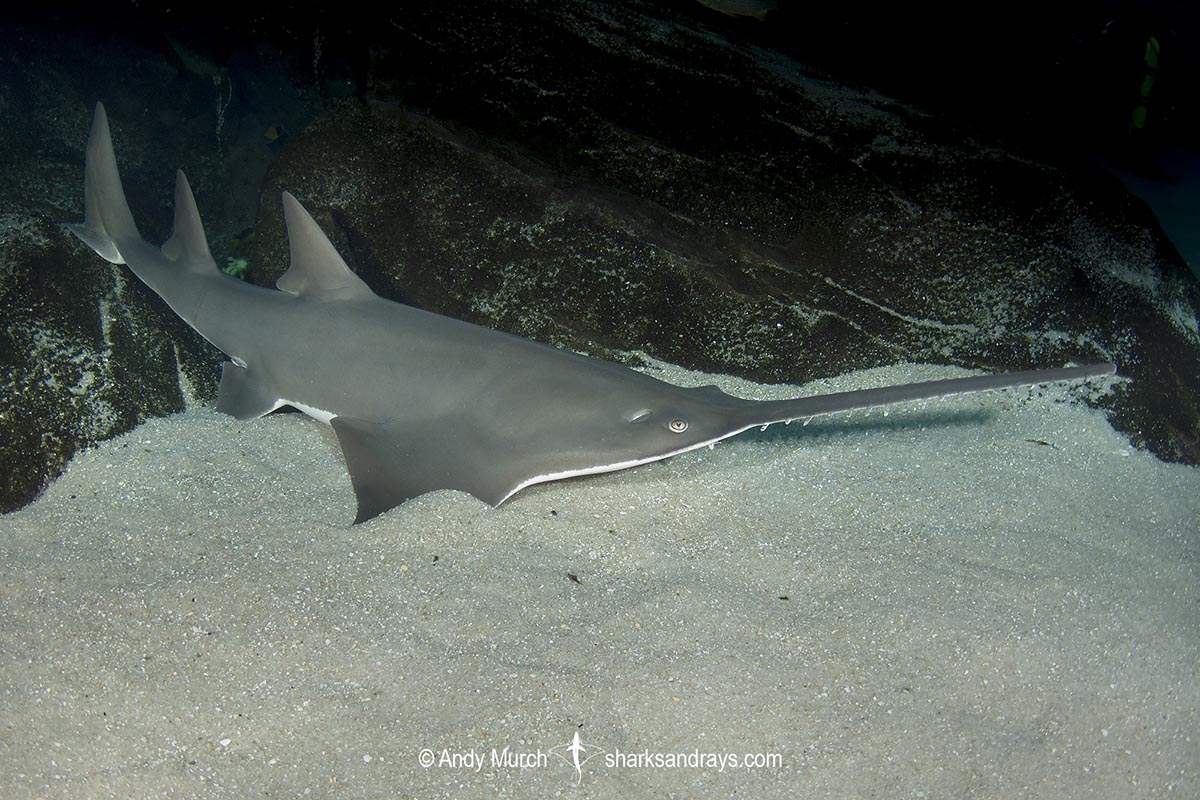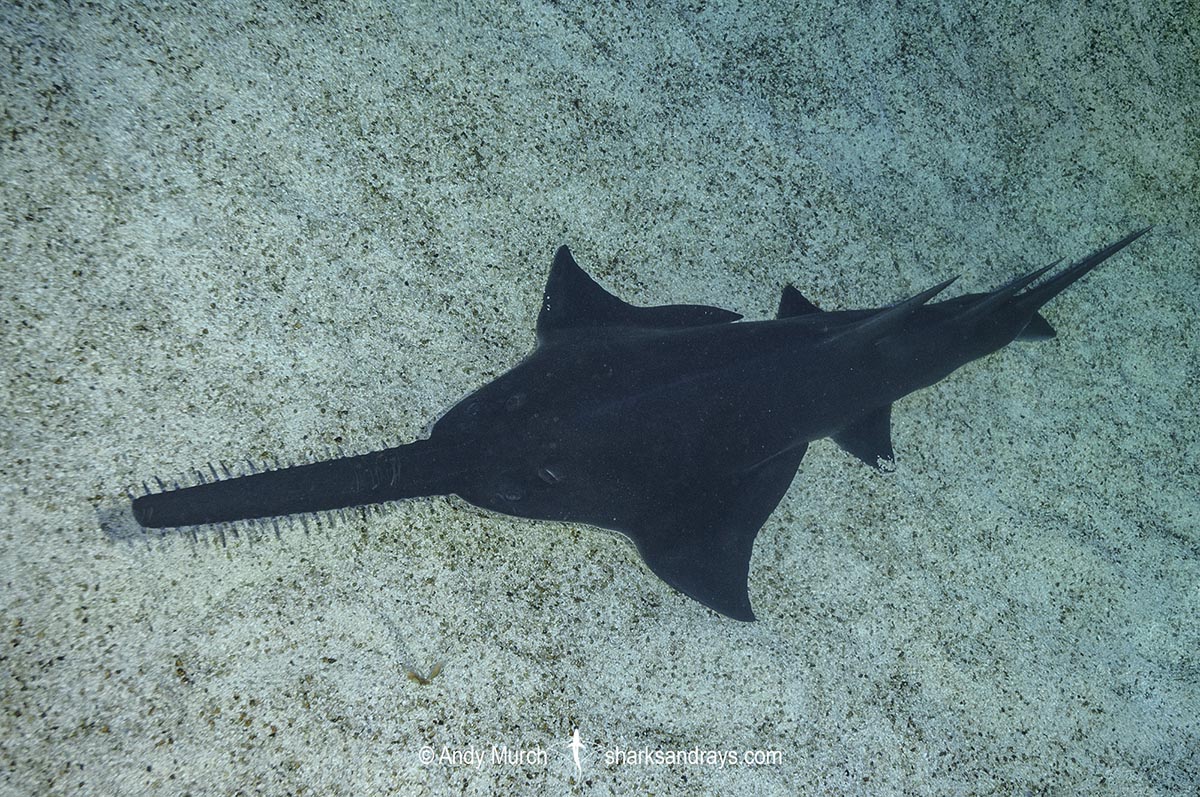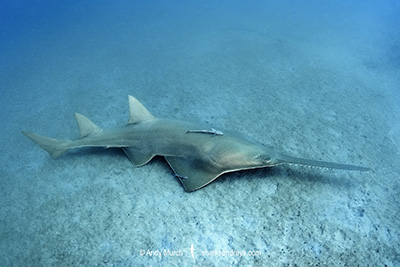Common names
Largetooth Sawfish.
Binomial
Pristis pristis.
Synonyms
antiquorum, Pristis canaliculata, Pristis caniculata, Pristis mississippiensis, Pristis typica, Pristis woermanni, Pristis zephyreus, Squalus pristis.
Identification
A large, heavy-bodied sawfish. Entire body covered with rough denticles. Rostrum broad and long, with 14-24 paired rostral teeth. Teeth slightly closer together at rostral tip than base. Rostrum length 0.27 x total length. First dorsal fin origin level with, or slightly posterior to free rear tips of pectoral fins. Dorsal posterior margins weakly falcate. Pectoral relatively wide, anterior margins weakly convex, posterior margins weakly concave, apices angular. Caudal fin posterior margin straight or weakly convex, with defined lower caudal lobe. One large lateral keel at caudal fin base.
Colour
Dorsum greyish-brown or yellowish. Ventrum White, Rostral teeth white.
Size
Maximum recorded length 656cm; possibly greater than 700cm. Size at birth 72-90cm.
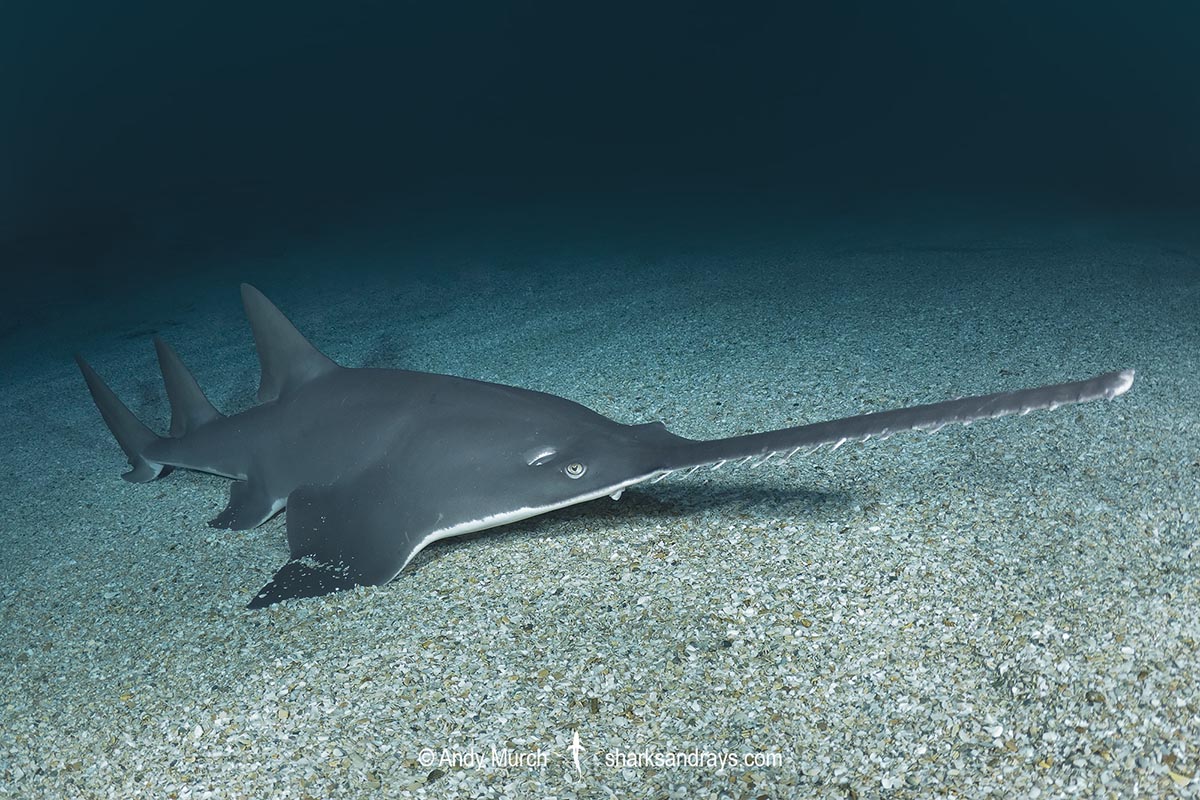
Conservation Status
CRITICALLY ENDANGERED
The Largetooth Sawfish (Pristis pristis) is a bycatch component of a variety of demersal fisheries, notably due to it’s tooth lined rostrum which is easily entangled in nets and line. Historically, it was heavily targeted for the high quality of its fins.
Even though international trade of all sawfish species is now prohibited since their inclusion in CITES Appendix 1, an illegal trade in sawfish rostra still exists and in some areas they are also still targeted for their meat and fins.
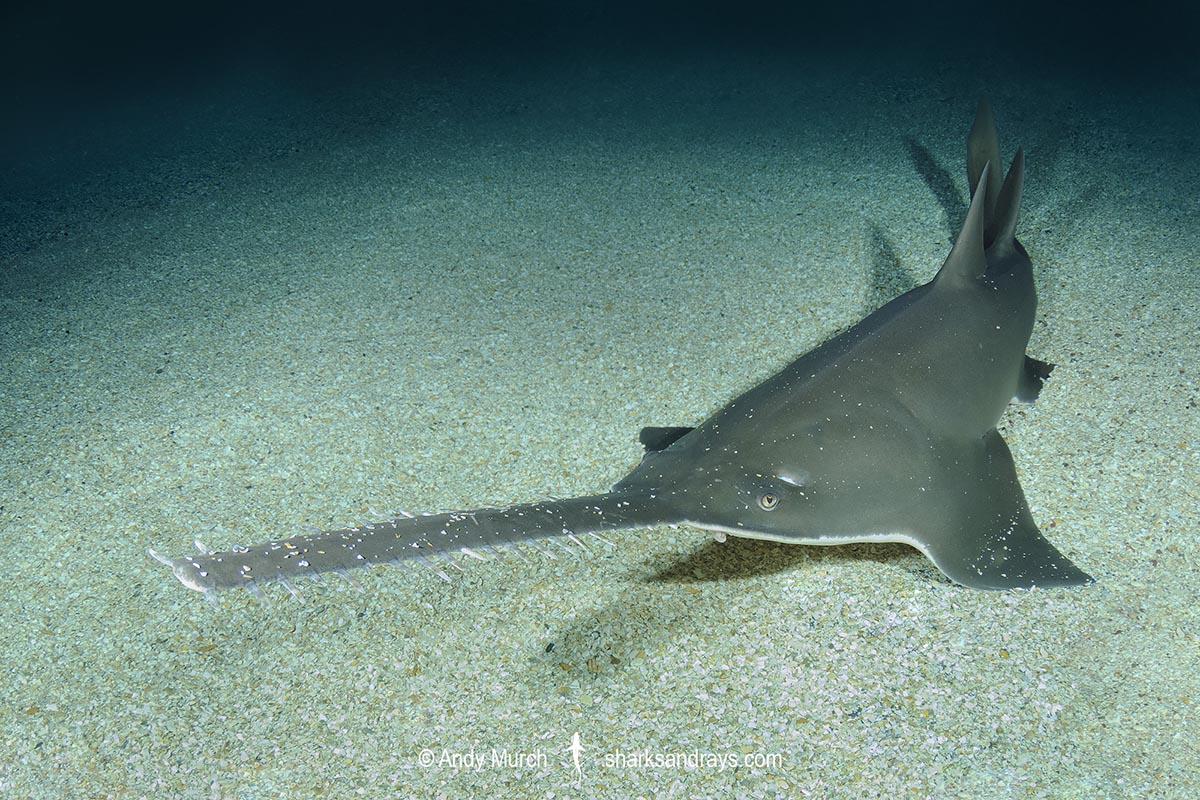
Habitat
Tropical/ Subtropical inshore habitats. The largetooth sawfish is found in coastal, estuarine, and fresh water habitats. Usually shallower than 10m, but recorded at 26m in Lake Nicaragua.
Distribution
Historically wide-ranging along tropical coastlines in the Atlantic, Pacific, and Indian Oceans, but overfishing and habitat loss have resulted in widespread regional extinctions.
In the western Atlantic, largetooth sawfish are still seen in Brazil but observations from Central America are very rare.
In the Eastern Atlantic, Guinea-Bissau and Sierra Leone are the only two countries with confirmed sightings in the last 10yrs.
In the eastern Pacific the only sightings within the last 10yrs are from Columbia, Nicaragua, and Panama.
The remnant population within the Indo-West Pacific appears to be highly disjunct with very occasional sightings in Australia, Bangladesh, India, Madagascar, Mozambique, Pakistan, and PNG.
Reproduction
Aplacental lecithotrophic viviparous. Litter size 1-13 based on records from Lake Nicaragua.
Diet
Largetooth sawfishes mostly feed on fishes, crustaceans, and molluscs.
Behavior
Largetooth sawfish are able to move freely between fresh and saltwater. They are believed to give birth in shallow coastal or estuarine areas but the population in Lake Nicaragua remains in freshwater year round.
Reaction to divers
Unknown but probably shy.
Diving logistics
Largetooth sawfish encounters by snorkelers and divers in the wild are very rare. Although Northern Australia and the Amazon Basin appear to have large enough remnant populations for potential encounters, visibility in both areas make underwater sightings difficult.
What’s new
View our full list of updates
Similar species
Smalltooth Sawfish Distinguishable by slightly narrower rostrum, dorsal fin origin level with pelvic fin origin, and lack of defined lower caudal lobe.

